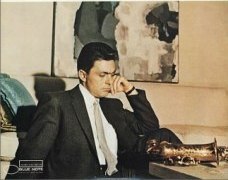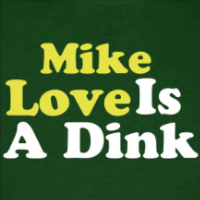#1 2016-10-09 04:52:45
- Beestonplace
- Member
- Posts: 1926
Bluephobia, excluding navy blue
Friends,
when it comes accessories, knitwear and ties, other shade of blue unless it is proper navy looks weird on me, given my usual background of navy suit/light blue shirt, or cream or navy chinos with a BD shirt.
Royal blue, ice blue, cornflower blue - all so wrong. Greens - different story, from dark forest green to tartan green to fawn.
I also dont "get" they oh so typical English combo of pink shirt / royal blue tie.
https://cdn.shopify.com/s/files/1/0347/3225/files/pinkshirt_bluetie_large.jpg?4076403749063628469
I LOVE , this foum
#2 2016-10-09 07:31:22
- TakasakiJeff
- Member

- From: UK
- Posts: 63
Re: Bluephobia, excluding navy blue
Not sure the excrescence in the linked picture represents the English pink shirt/blue tie combo - looks like typical iGent bad taste to me.
I have a few pink Royal Oxford shirts which I like to combine with a tie just a shade darker than airforce blue, which I wheel out quite often...
#3 2016-10-09 07:45:00
- 4F Hepcat
- THE Cat

- Posts: 14333
Re: Bluephobia, excluding navy blue
I do like a bit of pink or lilac, very fresh and just the ticket that exploded every now and again in a shirt or indeed, stripes in a tie.
Vibe-Rations in Spectra-Sonic-Sound
#4 2016-10-09 08:09:42
- Beestonplace
- Member
- Posts: 1926
Re: Bluephobia, excluding navy blue
yes yes I am talking about this difficult royal to cornflower blue for a tie, which only works with a white shirt, lets forget the pink shirts for a while
I LOVE , this foum
#6 2016-10-09 09:29:02
- Beestonplace
- Member
- Posts: 1926
Re: Bluephobia, excluding navy blue
Pallor-Caucasian.
Best colour combo for me: navy frame (suit), white, light blue or white/blue background (shirt), ties from dark burgundy to strawberry, or "Hermes"-Orange with electric blue, or Acid-ic yellow with mid blue.
I LOVE , this foum
#7 2016-10-09 11:36:44
- Bop
- Member

- Posts: 7661
Re: Bluephobia, excluding navy blue
Which one of those three in pallor Caucasian? Left middle or right?
#9 2016-10-09 12:43:09
- formby1
- Member

- From: Hauteur Extraordinaire
- Posts: 1039
Re: Bluephobia, excluding navy blue
My first impression of this is a young man who works in a clothing shop.
The pink gingham I've ordered from Acorn is very similar to the pink in the picture.
It isn't a 'typically' English Pink though, the 'typical' English Pink is softer.
I like pink with Brown. It can also work with a black too, a solid grenadine or knitted silk tie.
"Dressing, like painting, should have a residual stability, plus punctuation and surprise." - Richard Merkin
Souvent me Souvient
#10 2016-10-09 12:52:36
- Beestonplace
- Member
- Posts: 1926
Re: Bluephobia, excluding navy blue
so, lets please forget pink and go back to middle blue, like these:
http://germany.hermes.com/mann/krawatten/bedruckt/lightblue/configurable-product-h625923t-103170.html?color_hermes=CIEL/GRIS/AZUR&nuance=1&back_product_position=s-1-p-3
it doesnt work with a blue shirt
I LOVE , this foum
#11 2016-10-09 13:03:04
- formby1
- Member

- From: Hauteur Extraordinaire
- Posts: 1039
Re: Bluephobia, excluding navy blue
NO!!!!
"Dressing, like painting, should have a residual stability, plus punctuation and surprise." - Richard Merkin
Souvent me Souvient
#13 2016-10-09 13:08:21
- formby1
- Member

- From: Hauteur Extraordinaire
- Posts: 1039
Re: Bluephobia, excluding navy blue
I've nothing against Hermes ties, but colourwise, that tie is gutless.
"Dressing, like painting, should have a residual stability, plus punctuation and surprise." - Richard Merkin
Souvent me Souvient
#14 2016-10-09 13:43:45
- Beestonplace
- Member
- Posts: 1926
Re: Bluephobia, excluding navy blue
I told you so
I LOVE , this foum
#16 2016-10-09 23:50:14
- Beestonplace
- Member
- Posts: 1926
Re: Bluephobia, excluding navy blue
oh, really?
my point it that i somehow think these mid blues even clash with navy but work well with charcoal to mid grey
why??
I LOVE , this foum
#17 2016-10-10 01:22:47
- formby1
- Member

- From: Hauteur Extraordinaire
- Posts: 1039
Re: Bluephobia, excluding navy blue
Because mid-grey is about as neutral-a-colour as you can get. That's why its the best colour you can get for your first suit. Flexibility.
You can wear 'vibrant' blue ties with a navy suit, but you need a white shirt as said.
"Dressing, like painting, should have a residual stability, plus punctuation and surprise." - Richard Merkin
Souvent me Souvient
#18 2016-10-10 01:40:10
- 4F Hepcat
- THE Cat

- Posts: 14333
Re: Bluephobia, excluding navy blue
There have been periods were fashion has seen ties that match shirts almost exactly. Here's David Niven doing it on Parkinson, first in orange and then in light blue:
https://www.youtube.com/watch?v=Ji_K_jpCZSE
I think that light blue would be okay with navy.
That Hermes tie posted by Beestonplace would be good with a pink shirt.
Vibe-Rations in Spectra-Sonic-Sound
#19 2016-10-10 03:14:55
- Bop
- Member

- Posts: 7661
Re: Bluephobia, excluding navy blue
Sorry Beeston one last thing...could you post a swatch similar to your hair colour because it can define other things.. Im guessing its a brown tone above navy..but of course you might be grey or bald..i dont know.
I can break down your question for you and hopefully it will give you some structure as to understanding why...however as cerebral a reason can be..let the eye be the judge..you strike me as someone with a sensitivity to these things so trust your judgement..its good to be able to understand why you have those intuitive responses though I guess..
Last edited by Bop (2016-10-10 03:31:42)
#24 2016-10-11 00:01:36
- Bop
- Member

- Posts: 7661
Re: Bluephobia, excluding navy blue
Only through their positions, Im not talking about colour mixing like with subtractive or additive methods. Lets assume the colour's hue is one axis (which can be a combination of various hues depending on how it is being created, but you're only left with one hue, and that is the one you concentrate on)..it's saturation is the second axis and the luminosity is a third. With those three axis you have the positions and therefore can build relative ratios of all three and anyother colours you might be matching.
But to answer your question, yes colours can be closer to a neighbour by hue..ie a purpley blue because blue and magenta and the reds are next to each other..the other colour close to blue is green so you can get greeny blues....however saturation also plays a massive role..so you could get a sagey khaki and sit it next to a mink purple khaki and they should look pretty good because the hues are opposite each other but the saturation and luminosity of both colours would be similar.
I would have to make a video of showing how I do this on a colour picker in my drawing app because its quite hard to describe the practice of it but quite easy to show.. the idea is a very simple one that actually creates a lot of possibility, I did not want to create a set of rules.
The problem with colour theory is it concentrates too much on hue..hue is one aspect but the other two axis allows different hues to work as the might not do if you just consider the single axis of hue.
Also, this shouldnt really be burdening you when picking colours..when you are picking items that work together theyre already there in front of you..you really dont need any cerebral theory..this should be evident and its your innate ability that determines you capabilities and taste...a bit like tuning a guitar if youve ever done that.
The reason I developed this approach was because when I'm designing it is from scratch I have infinite choice..I didnt want to depend on standard colour theory I saw it as quite limited..and my intuition wasnt as good as many more gifted people's is but since studying it for years like with anything you become more attuned to it. Its a good way in for people that struggle and a good frame work for designers who want to have a better grasp of the context of colours so they can produce more and more sophisticated results... any hue can work with anyother hue if the other two axis are considered...a much less limited approach
Last edited by Bop (2016-10-11 00:48:36)
